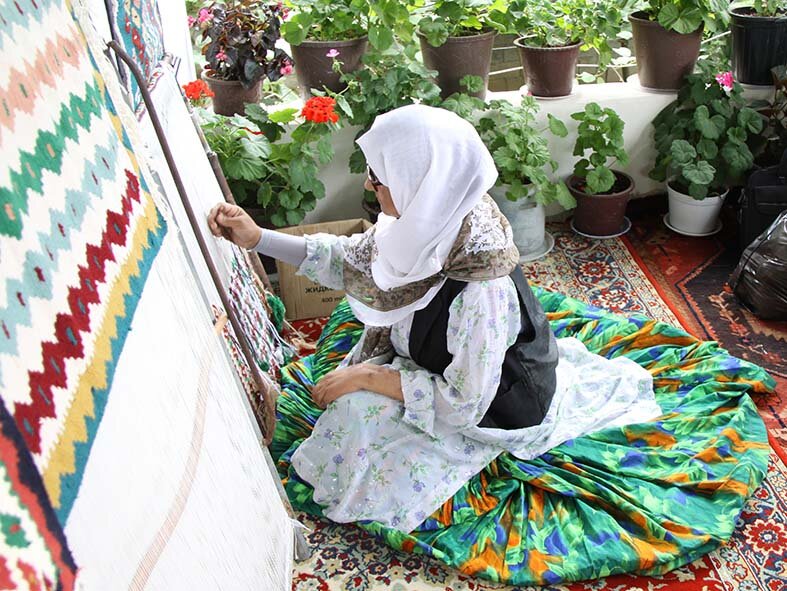Handicraft training courses aim to empower breadwinner women

TEHRAN – The Welfare Department of Qarchak, a city in Tehran province, will hold training courses in three handicraft fields of kilim, painting, and leather works for women who are breadwinners of their families.
Online markets are planned to promote the women’s handicraft productions, as due to the coronavirus outbreak in the country handicraft exhibitions and markets are closed, ISNA quoted Maryam Khodabandeh, a local tourism official, as saying on Tuesday.
In Iran, there are 3 million women-headed households, out of a total of 22 million families, and most of them can be found in less developed areas of the country.
Earlier this month, deputy tourism minister Pouya Mahmoudian said that Iran exported $527 million worth of handicrafts during the past calendar year 1398 (ended March 20).
Of the figure, some $273 million worth of handicrafts were exported officially through customs, and $254 million was earned via suitcase trade (allowed for customs-free and tax-free transfer) through various provinces, she added.
Back in May, Mahmoudian noted that due to the outbreak of coronavirus, suitcase exports of handicrafts were completely stopped since the month of Esfand (the last month of the year), and official exports of handicrafts experienced a steep decline.
Talking on the significance of handicrafts in the country, she noted, “Iran globally ranks first in terms of having the topmost number of world cities [and villages] of handicrafts.”
“Some 295 fields of handicrafts are currently practiced across Iran with more than two million people engaging, majority of whom are women… Handicrafts also play an important role in the economy in our rural villages,” she said.
Iran’s handicrafts exports reached $289 million in the year 1397, showing three percent growth year on year, based on data released by the Ministry of Cultural Heritage, Tourism, and Handicrafts. Traditional ceramics, pottery vessels, handwoven cloths as well as personal ornamentations with precious and semi-precious gemstones were exported to Iraq, Afghanistan, Germany, the U.S., the UK, and other countries.
ABU/MG
Leave a Comment